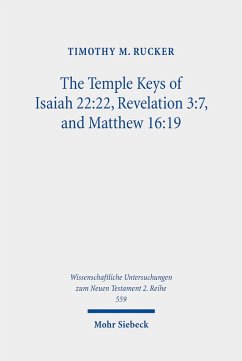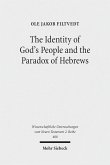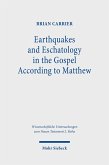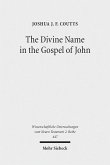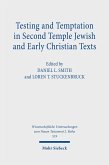Timothy Rucker demonstrates in this study that the temple was a key background for Shebna's position and offense in Isa 22:15-25, which opens a new door for reconsidering the allusions in Rev 3:7-13 and Matt 16:18-19. He uses intertextuality and critical spatiality in order to interpret these allusions and their potential implications for the conception of sacred space among some early Christ followers. The open door of Rev 3:8 is an opportunity to reclaim potential sacred space for God on earth, so that others may become God's sacred space as well. In Matt 16:18-19, Peter's key foundational role is to provide teaching that will lead to both Jesus' assembly manifesting the righteousness of the kingdom on earth and to other Jews following Jesus as the Messiah. Thus, the temple imagery of Isa 22:22 encourages missionary engagement in both New Testament contexts. Born 1983; BA, Wheaton College; MDiv, The Southern Baptist Theological Seminary; ThM, Western Seminary; PhD, The Catholic University of America; currently serving as the Associate Pastor of Discipleship at First Baptist Church Lancaster in Lancaster, Ohio.
Dieser Download kann aus rechtlichen Gründen nur mit Rechnungsadresse in A, B, BG, CY, CZ, D, DK, EW, E, FIN, F, GR, HR, H, IRL, I, LT, L, LR, M, NL, PL, P, R, S, SLO, SK ausgeliefert werden.

